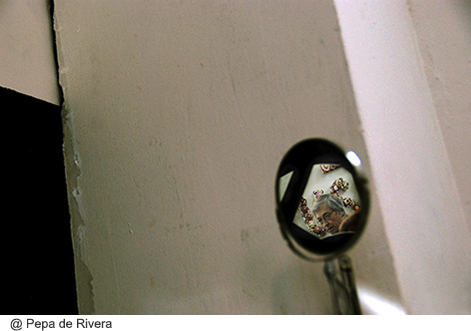Films and Photos
© Guillermo Labarca
 There are newly released films, like Roma by A. Cuarón or Ida and Cold War by P. Pawlikowski, that remind us of older ones, like Bicycle thieves by V. De Sicca or Rocco and His Brothers by L. Visconti and many others of the Neorealism movement and other currents inspired upon it. They remind us of them because of their themes, because they attempt to portray a reality full of tensions with a direct language, because of their sensibility, but above all because of their photography. That is also the reason why they invoke photographers that have attempted to show a reality loaded with meanings without recurring to special effects or turning formal recourses into the axis of their images. Here, we are referring particularly to R. Frank, W. Evans, V. Maier, H.Cartier-Bresson, D. Lange, J. Koudelka; we should also recall the more day-to-day photos, the ones removed from battlefields, of R. Capa and others like Charo Diez, John Bulmer, Pepa De Rivera, Kamil Sleszlinski and so many others (some have been published in previous editions of this magazine) that are motivated – consciously or unconsciously – by intentions similar to those of the aforementioned filmmakers: to reveal the reality hidden behind the surface of things through images that are as close as possible to immediate perception.
There are newly released films, like Roma by A. Cuarón or Ida and Cold War by P. Pawlikowski, that remind us of older ones, like Bicycle thieves by V. De Sicca or Rocco and His Brothers by L. Visconti and many others of the Neorealism movement and other currents inspired upon it. They remind us of them because of their themes, because they attempt to portray a reality full of tensions with a direct language, because of their sensibility, but above all because of their photography. That is also the reason why they invoke photographers that have attempted to show a reality loaded with meanings without recurring to special effects or turning formal recourses into the axis of their images. Here, we are referring particularly to R. Frank, W. Evans, V. Maier, H.Cartier-Bresson, D. Lange, J. Koudelka; we should also recall the more day-to-day photos, the ones removed from battlefields, of R. Capa and others like Charo Diez, John Bulmer, Pepa De Rivera, Kamil Sleszlinski and so many others (some have been published in previous editions of this magazine) that are motivated – consciously or unconsciously – by intentions similar to those of the aforementioned filmmakers: to reveal the reality hidden behind the surface of things through images that are as close as possible to immediate perception.
What is this strategy used by photographers and filmmakers based on? Simply on their perception that reality hides a universe of different meanings and that, to be able to show these meanings, it is useful to forego artifices. Also, many of them find it convenient to ignore, although temporarily, aspects of reality that, even though they are natural, can lead us to distraction, like color. Their choice of black and white is a way to lead the spectator to pay attention to the details that, according to the author, are the most revealing.
But most importantly, for photographers and filmmakers, is to discover that a simple gaze, a gesture, the hint of a movement, a countenance, the position of a body, an abandoned place, etc., condense a story, bring awareness to the existence of a series of events behind that image; that what we are seeing came to be there through a process that might be easy or difficult, loaded with positive or negative experiences and emotions, accompanied by the story of the creator of these images. Showing all of this in an image or series of images is the task undertaken by the creator.
In all, the strength of photographers is to the able to perceive history and communicate it. It doesn´t matter that the images have been composed, constructed, organized; what does matter is that they surprise us with their immediacy, with their relation to the medium they are using and that they express a truth that is more real than reality itself. What Julian Barnes said about art applies to this kind of phtography: "Art (photography we would say) not only captures and reflects the excitement, the emotion that helds life. Sometimes even goes further: art is that emotion"

